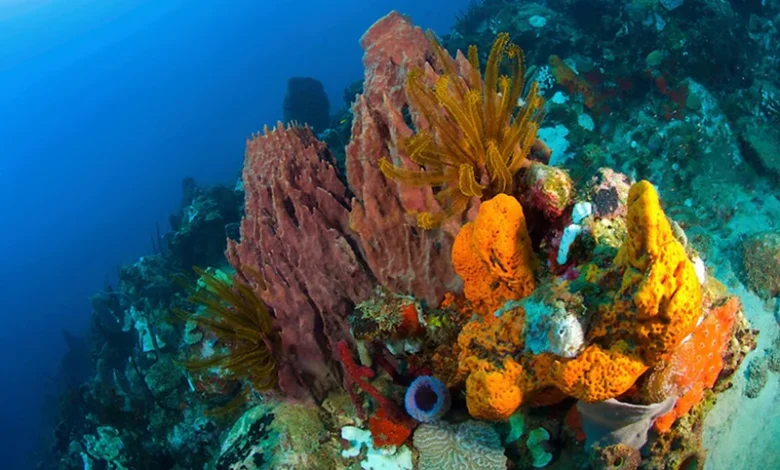Dominica’s Coral Reefs

Dominica’s coral reefs are some of the Caribbean’s most biologically diverse and ecologically significant, thriving primarily along the island’s west coast. Notable locations such as Tube Reef, Champagne Reef, Scott’s Head Pinnacle, and reefs within the Soufriere Scotts Head Marine Reserve (SSMR) feature a stunning range of hard and soft corals that support various marine species. Dominica’s reefs benefit from nutrient-rich volcanic waters, which contribute to the growth of unique coral structures that attract marine life, scientists, and eco-tourists alike.
Types of Corals and Marine Life
Dominica’s reefs are home to various coral types, including hard corals such as brain corals, elkhorn corals, and staghorn corals, which provide shelter for numerous reef fish. The vibrant soft corals—such as sea fans, sponges, and tube corals—add to the reef’s diversity, with each type creating specific habitats for organisms. Large barrel sponges, colourful tube sponges, and delicate vase corals can be seen adorning the rocky reefs, each contributing to the reef ecosystem.
The marine life here is equally diverse. Hawksbill and green turtles are common, feeding on sponges and sea grass along the reef. Snorkelers and divers frequently encounter trumpetfish, parrotfish, and squirrelfish, while more elusive species such as longlure frogfish and seahorses delight underwater photographers. Larger marine animals, including barracudas, stingrays, and octopuses, are also common around the deep reefs and drop-offs, especially in areas like Scott’s Head and the Cachacrou Isthmus. The variety of fish, from the bright parrotfish to the camouflaged frogfish, helps create a vibrant and balanced ecosystem.
Conservation Organizations and Initiatives
Various conservation initiatives and organizations support Dominica’s coral reefs. The Soufriere Scotts Head Marine Reserve (SSMR) is a designated marine protected area that oversees sustainable tourism, fishing, and preservation efforts. Established in 1987, the SSMR enforces zoning restrictions to balance diving and fishing activities, safeguarding the reefs and the fish populations that depend on them. The Cabrits National Park Marine Section protects the island’s marine biodiversity and conserves various aquatic species and habitats, ensuring a thriving ecosystem.
The Dominica Marine Center and Dominica Watersports Association also promote sustainable diving practices and conservation education. Local NGOs, such as the Nature Enhancement Team (NET), also conduct coral reef monitoring, waste management, and environmental awareness programs, particularly in response to threats like Stony Coral Tissue Loss Disease (SCTLD), which has affected coral health along Dominica’s coasts. Collaborative efforts with international organizations like REEF (Reef Environmental Education Foundation) bring resources, research, and monitoring initiatives to help manage and restore affected coral populations.
The Dominica government has partnered with international bodies to enhance marine conservation. As part of the Caribbean Challenge Initiative (CCI), Dominica is committed to conserving at least 20% of its near-shore marine and coastal environment, aiming to protect coral reefs while promoting sustainable economic growth through eco-tourism.
Unique Features and Tourism Impact
The reefs around Champagne Reef are renowned for their volcanic fumaroles, where geothermal vents release bubbles that resemble sparkling champagne, providing a unique snorkelling and diving experience. Nearby, Scotts Head offers underwater cliffs and pinnacles that attract advanced divers, creating opportunities for eco-tourism that align with conservation objectives. Dominica’s marine reserves and eco-friendly tourism practices are designed to preserve these vibrant coral systems, ensuring they remain a haven for biodiversity and a valuable resource for the local economy.




